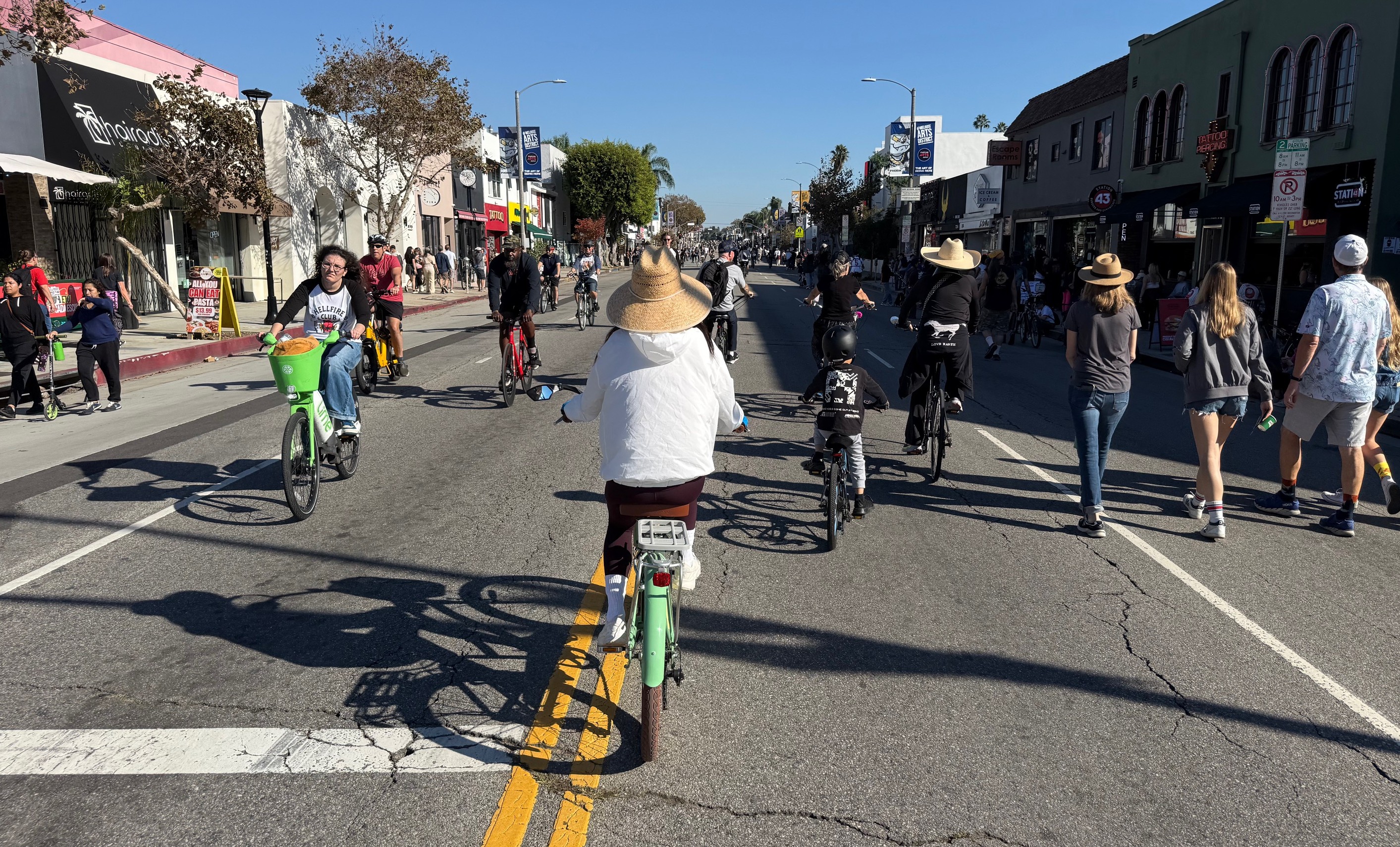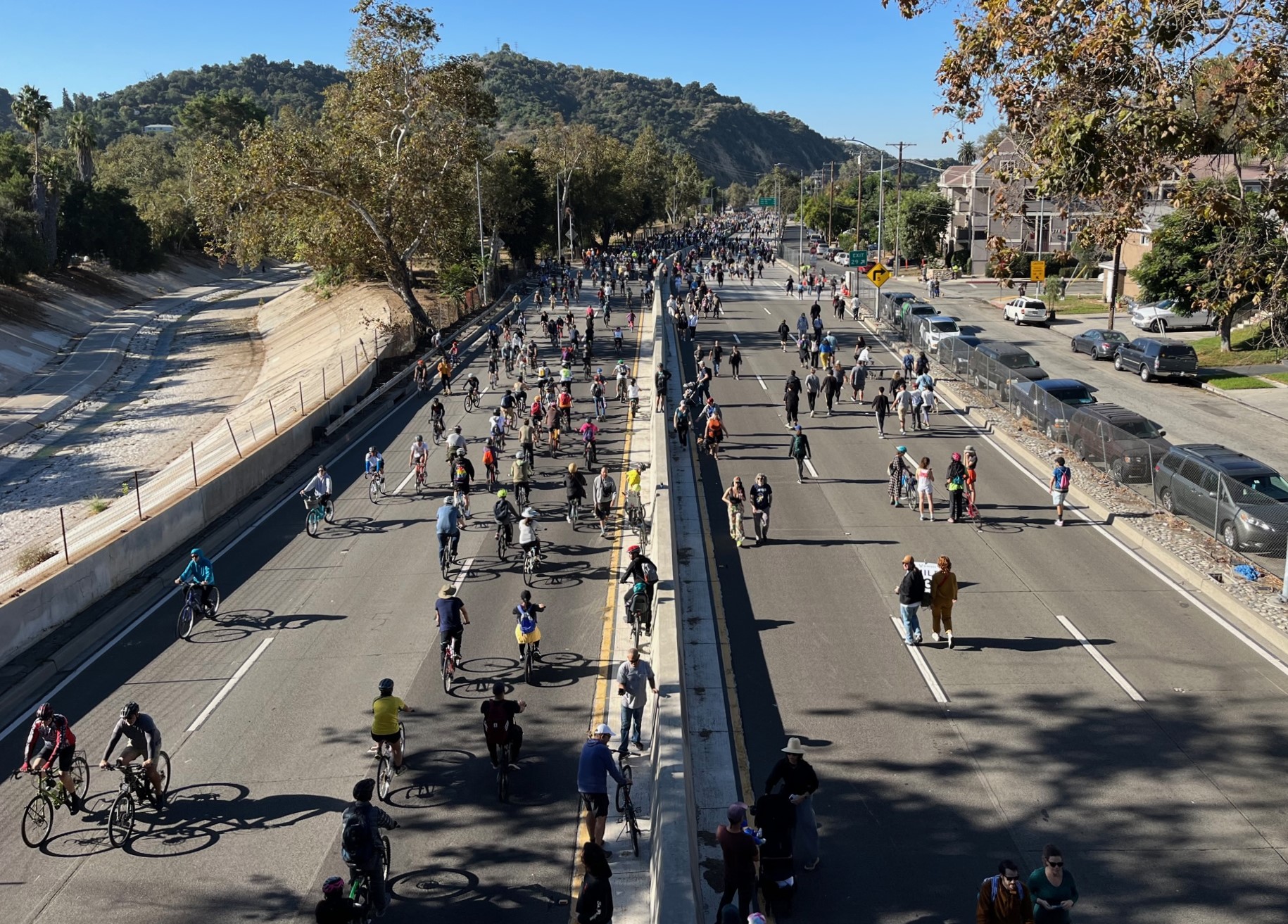Maybe it doesn’t matter what President Obama says in his State of the Union. According to a Washington Post analysis, his batting average for last year’s SOTU proposals was a .208. In 2013, the president pleaded for tax reform, an American Jobs Act, $50 billion for a Fix-It-First infrastructure repair binge, a “Partnership to Rebuild America” to lure private capital to infrastructure projects, and an Energy Security Trust to use oil and gas revenues for technology to “shift our cars and trucks off oil for good.” None of that went anywhere.

But this year, perhaps Obama’s most significant promise was to flex his executive muscle and stop waiting around for Congress. “America does not stand still, and neither will I,” he said. “So wherever and whenever I can take steps without legislation to expand opportunity for more American families, that's what I'm going to do.” Going it alone, Obama has a much better shot at fulfilling his priorities.
Streamlining
The only transportation-related promise Obama made that he can accomplish with his own executive power is to continue streamlining environmental review and permitting for key projects. While you may get your back up when politicians talk about streamlining environmental review -- some call it “steamrolling” -- executive action on this front is more short-term and more tactical than across-the-board legislation. By picking specific projects, the administration has been able to shepherd them through the process.
House Transportation Committee Chair Bill Shuster seems to have forgotten that initiative. In a statement this morning, Shuster said the president has been talking about streamlining for two years “but we are still waiting for action.”
Other administration initiatives, like the partnership between U.S. DOT, HUD and the EPA, happen without the need for Congressional approval.
But if Obama wants to take his promise to use the full extent of his executive power seriously, there’s more his administration can do.
Performance
First, we’re still waiting for U.S. DOT to issue rules interpreting MAP-21. Bold new performance measures for congestion and system performance would go a long way toward improving transportation without any Congressional action. “If they can do something more than just move vehicles faster, that would be helpful,” said Transportation for America’s David Goldberg.
Plus, though much of federal disbursement of funds is bound by formula, the administration can start to make smarter investment decisions. “There are lots of ways that the DOT can start trying to work with states and with MPOs to improve the planning process,” said Joshua Schank of the Eno Center for Transportation, “and to make investment decisions that are based on performance rather than checking boxes.”
These days, U.S. DOT certifies every Transportation Improvement Program plan state DOTs and MPOs send their way, and they’ve encountered enormous blowback whenever they've tried not to. “Well, maybe now is time -- if you’re expanding your executive authority -- to do a little bit more of that,” Schank said, “and to say, ‘Actually, your plan is just a list of projects that’s been stapled together because every legislator gets their project, and that’s not actually a plan, and we want to see a real plan based on performance outcomes if you want to be certified and to get your money.’”
“Now that’s a huge political risk to take,” Schank went on, “but that’s the kind of thing that he could start doing if he is expanding executive power.”
Data
Another potentially high-impact action U.S. DOT could take in an instant without Congressional approval would be to start publishing information about state performance and expenditures that’s currently kept under wraps. States are secretive about how they spend taxpayer money and how well they’re doing on performance measures like safety. The Federal Highway Administration helps states keep those secrets, and it shouldn’t. A little sunlight could help push states to do better.
Reauthorization
While transportation reauthorization is firmly the job of Congress, the president could take more leadership. He could weave the economic goals he spelled out last night into a transportation program that helps meet those goals, Goldberg said.
“It doesn’t do a worker any good to train for a new job in the suburbs if he can’t get to it,” said Goldberg. “It doesn't do much good to increase manufacturing if the producers can't move their goods through the bottlenecks they will encounter in our metropolitan regions."
Obama did challenge Congress last night to pass a transportation bill this summer, though he didn’t say anything about finding a sustainable funding source aside from a vague reference to tax reform.
There was nothing in last night's State of the Union as bold as last year’s proposal for a $50 billion Fix-It-First program for infrastructure repair or 2011’s push for high-speed rail. And nearly everything Obama wants for transportation and infrastructure does have to come from Congress.
The president also pledged to continue with energy conservation and fuel efficiency efforts. His firm statement that “the debate is settled -- climate change is a fact” was refreshing.
Reaction
Several advocacy groups praised the speech and said they hoped it would lead to more infrastructure funding, to avoid the looming “transportation fiscal cliff” as the Highway Trust Fund runs dry.
Larry Hanley of the Amalgamated Transit Union was specific that the reauthorization needed to adequately fund efficient transit, and not just serve as a blank check for all transportation expenditures.
“With exploding urban populations, worsening traffic jams, young people forgoing cars and stressed public transit systems, we call on Congress to quickly reauthorize a federal transit program that sets forth a serious urban transportation agenda for all,” Hanley said in a statement. “There is literally nothing more effective for getting our economy moving than public transit.”






